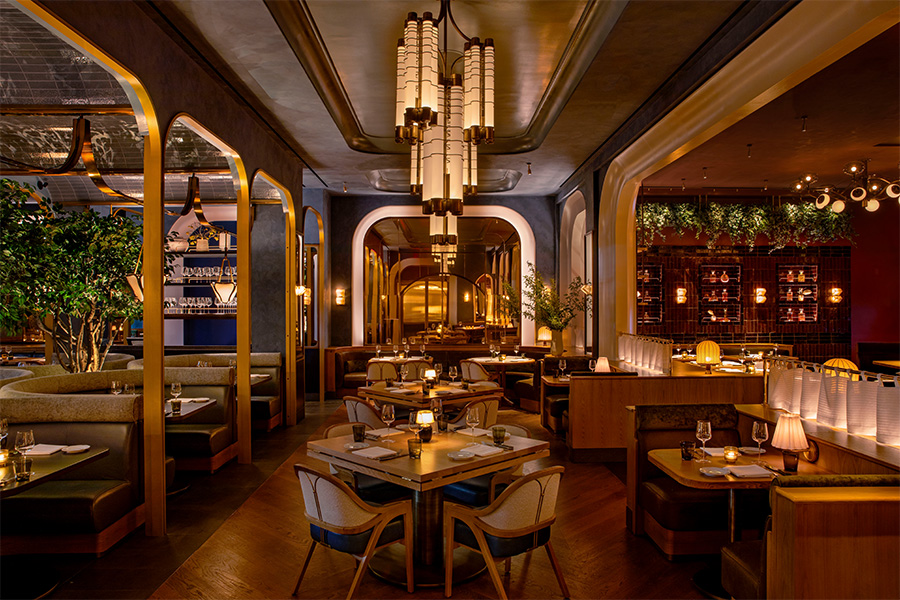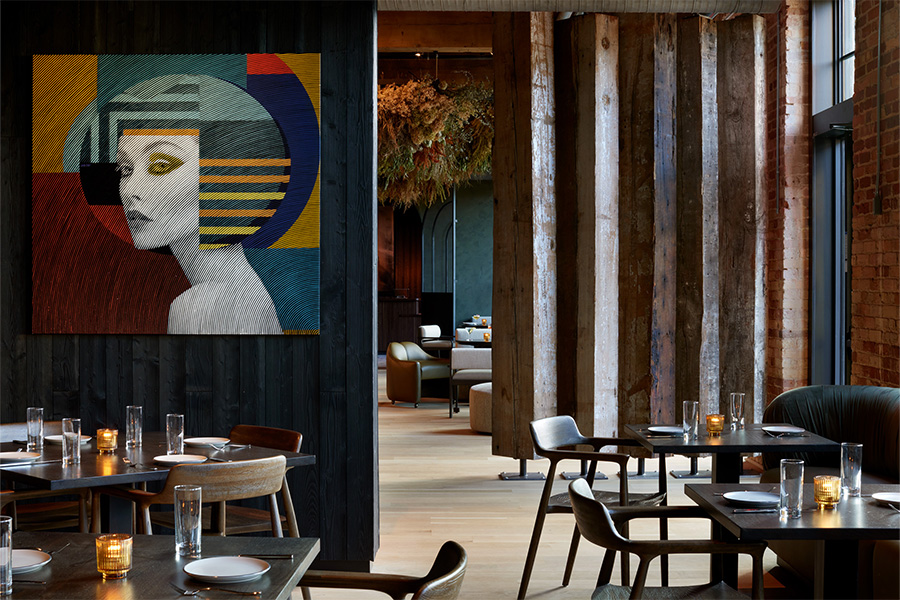Hospitality Design’s Women in Design Awards breakfast returns to HD Expo + Conference in Las Vegas on May 6th. Celebrating five industry leaders for their inspirational achievements, the signature event is presented in partnership with NEWH. We chatted with the 2025 recipients about how they got their start, career-defining projects, obstacles, and more.
Masako Fukuoka
Studio Director, CRÈME
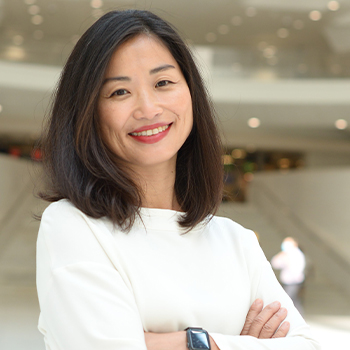 Growing up surrounded by both science and art, Masako Fukuoka, was introduced to watercolor painting at a young age by her father, a dentist with a passion for the arts. Though he envisioned a different path for her, Fukuoka was captivated by design, inspired by the work of Tadao Ando. A Parsons graduate, she spent nearly 20 years as principal and design director at Jeffrey Beers International before joining Brooklyn, New York-based CRÈME in 2022. There, she has worked on projects like the Kimpton Hotel Theta in New York and is currently developing a ground-up luxury residential estate among other notable projects.
Growing up surrounded by both science and art, Masako Fukuoka, was introduced to watercolor painting at a young age by her father, a dentist with a passion for the arts. Though he envisioned a different path for her, Fukuoka was captivated by design, inspired by the work of Tadao Ando. A Parsons graduate, she spent nearly 20 years as principal and design director at Jeffrey Beers International before joining Brooklyn, New York-based CRÈME in 2022. There, she has worked on projects like the Kimpton Hotel Theta in New York and is currently developing a ground-up luxury residential estate among other notable projects.
What are your earliest design memories?
When I was entering the 6th grade, my parents bought me a new set of bedroom furniture. I insisted on a round solid oak table and a solid oak chair instead of a typical study desk, and a gray modern sofa bed. They were so impractical. But I was interested in a multifunctional space where I could entertain a group of friends. I used to spend my Sundays rearranging furniture and planning the next party.
How did you get your start in the hospitality industry?
Stephen Alton, my thesis adviser at Parsons School of Design, was good friends with Allen Prusis, a managing principal at Rockwell Group. Stephen recommended me to Allan, and he and interior director Alice Yui gave me a job at Rockwell Group right out of school. It was a sink or swim situation. I remember asking an accountant there to teach me Microsoft Excel so I could do an FF&E budget.
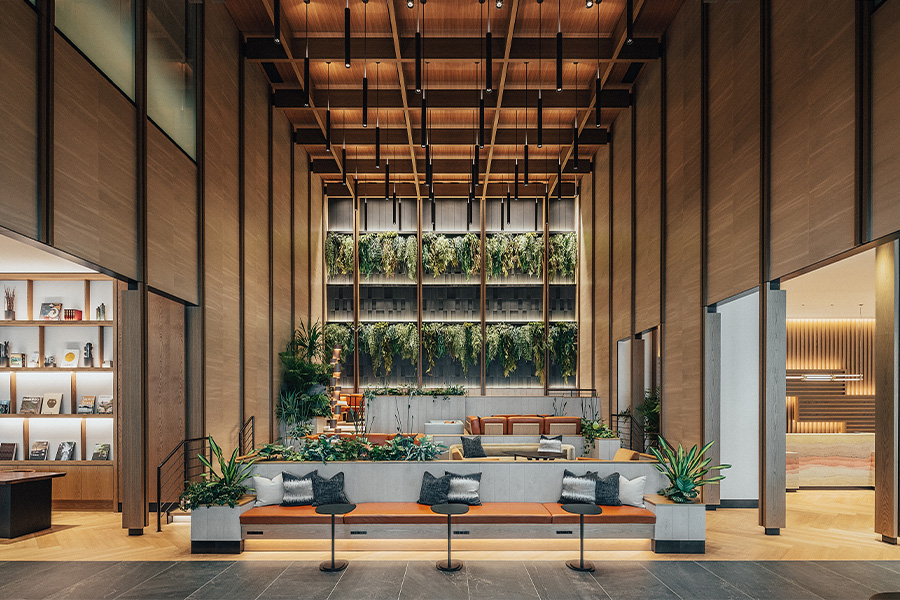
Greenery backs the lobby at the Sheraton Kagoshima in Japan
Is there a defining project that shaped your design career?
Ironically, it came when I was working on the Chamber Hotel—my first hotel project at Rockwell Group. I was feeling a bit inadequate working on a hotel project not knowing anything about it. They sent me down to Miami to take a look at a potential project and put me up at the Delano, designed by Philippe Starck. I loved its serenity and simplicity, but it also had a very clear point of view. After that, I got a call from my [former] mentor, Suzanne Couture, who had gone to work for Ian Schrager Company and wanted me to [come work for her there]. It was the perfect opportunity to learn more about the hotel industry and a once-in-a-lifetime opportunity to work with Starck. I ended up working at Schrager for about four years, completing both the Hudson and Clift hotels [in New York and San Francisco, respectively].
What’s one lesson from your career that you wish you had known earlier?
At the end of the day, the relationship is everything. I wish I had known that so I could have done a better job keeping in touch with the people I met throughout my career.
What obstacles have you faced as a woman in the industry?
Trying to start a family. I had a hard time while working fulltime and managing multiple projects with a lot of stress. But my late mentor, Jeffrey Beers, and team were so supportive and got me through it.
What are you working on?
We are very excited about the Treehouse Hotel in Sunnyvale, California and the 1 Hotel in Akasaka, Japan, opening this year. On the boards, we have a luxury lifestyle hotel renovation in Hawaii, several urban hotels, a ground-up restaurant in a ski resort in Colorado, a modular beach hotel in Japan, and a ground-up cabin and a large residence for a private client in New York, to list a few. I am most excited about the cabin, as we have been working on building our architectural side. We have also been working with a Japanese furniture company to develop a line of office furniture influenced by hospitality design.
Marisol Fisher
Vice President, Design Services, Latin America + the Caribbean, Hyatt
 Marisol Fisher has spent nearly two decades shaping hospitality design across Latin America and the Caribbean, overseeing new builds and renovations for Hyatt’s full-service brands. A registered architect in Colombia and a graduate of Los Andes University, she joined Hyatt in 2006 as a design coordinator and steadily rose through the ranks, bringing a global perspective to her work. Growing up with parents who were architects and engineers, Fisher was immersed in blueprints and construction sites from an early age, laying the foundation for her passion for design. She thrives on balancing creativity with practical execution, ensuring that each project is both memorable and functional.
Marisol Fisher has spent nearly two decades shaping hospitality design across Latin America and the Caribbean, overseeing new builds and renovations for Hyatt’s full-service brands. A registered architect in Colombia and a graduate of Los Andes University, she joined Hyatt in 2006 as a design coordinator and steadily rose through the ranks, bringing a global perspective to her work. Growing up with parents who were architects and engineers, Fisher was immersed in blueprints and construction sites from an early age, laying the foundation for her passion for design. She thrives on balancing creativity with practical execution, ensuring that each project is both memorable and functional.
What inspired you to pursue a career in design?
Design is in my DNA. Growing up in a home where both of my parents were professionals in architecture and civil engineering, I was constantly surrounded by blueprints, models, and construction sites. I remember playing with my mom’s architectural models as a child, laying the foundation of my passion for design.
How did you get your start in the industry?
It was a mix of serendipity and the right opportunities aligning at the right time. A friend who worked at Hyatt introduced me to the industry, and from my first exposure, I was captivated by the dynamic intersection of design, service, and experience that defines hospitality.
Is there a moment that shaped your approach to the industry?
The 2008 economic recession was a pivotal moment in my career. It forced the industry to redefine traditional notions of how we designed hotels and what luxury meant. That period prompted us to innovate, shifting from excess to intentionality and from conventional luxury to more meaningful, experience-driven design.
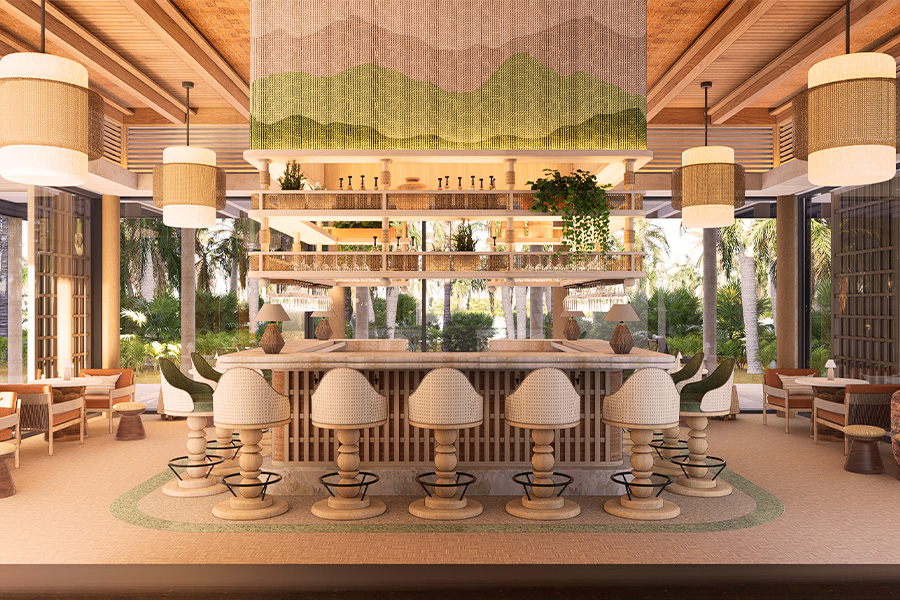
The light and airy bar at the Alila Mayakoba in Mexico, designed by Cuaik
Is there anyone you would like to elevate in the industry?
Is difficult to elevate just one, but Ana Ramirez, an architect and wellness hospitality expert, stands out. She is the cofounder of Ancestral Handmade Hotels, a concept that revives and celebrates ancestral wisdom at every stage, from building methods to wellness programming. I’d also highlight Angelica Acebedo-Frint, a hospitality branding expert whose creativity and strategic vision set her apart in the industry. As the branding lead at the Gettys Group, she is shaping the future of hospitality with an extraordinary ability to blend storytelling and design. I’ve had the privilege of witnessing her talent firsthand, not just as a leader in the field, but also as my sister.
What obstacles have you faced as a woman in the industry?
As a Latina architect working in a predominantly male-dominated industry within an American corporation, I’ve encountered challenges and preconceived stereotypes related to both my gender and cultural background. Over time, I’ve learned that building authentic connections with people is the key to success. When I foster strong relationships within my teams, those initial biases fade, and my expertise and contributions become the focal point. Embracing my unique perspective and remaining authentic has proven to be a powerful tool in my leadership journey.
What’s one lesson from you wish you had known earlier?
Beyond staying up to date on design and hospitality trends, it’s essential to grasp the business side of hotels. Having an understanding of these financial and operational aspects makes you a more strategic and effective designer.
What advice would you give your younger self?
Every challenge you face will eventually resolve itself, so take a deep breath, embrace the present, and cherish every moment and person in your life.
Chantell Walsh
Vice President, Design + Construction, Strategic Hotels & Resorts
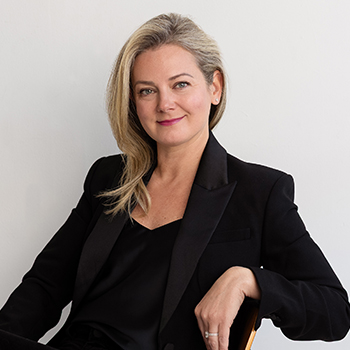 With a background in architecture, Chantell Walsh excels in design management, repositioning assets to enhance value and guest experience. Since joining Strategic in 2015, she’s been integral to overseeing capital deployment, aligning projects with investment goals, while also leading design teams to ensure top-tier standards. Her expertise in balancing creativity and financial strategy drives the transformation of high-end properties, where she directs the creative vision and development for the company’s luxury portfolio. “I’m privileged to work alongside incredibly talented teams,” Walsh says. “Together, we get to shape the guest experience through design.”
With a background in architecture, Chantell Walsh excels in design management, repositioning assets to enhance value and guest experience. Since joining Strategic in 2015, she’s been integral to overseeing capital deployment, aligning projects with investment goals, while also leading design teams to ensure top-tier standards. Her expertise in balancing creativity and financial strategy drives the transformation of high-end properties, where she directs the creative vision and development for the company’s luxury portfolio. “I’m privileged to work alongside incredibly talented teams,” Walsh says. “Together, we get to shape the guest experience through design.”
What inspired you to pursue a career in design?
Art has always been a passion of mine. In high school, I gravitated toward architecture and design classes, filling my electives with art courses. These experiences solidified my interest in creativity, and ultimately, inspired me to pursue a career in design.
How did you get your start in the hospitality industry?
With [my] background in architecture, I was introduced to the hospitality industry by an asset manager during a time when new construction had slowed significantly. After 2007, as the focus shifted toward interior renovations, I found myself immersed in hospitality design, shaping existing spaces to meet evolving needs.
What’s a recent project you’re proud of?
We had the rare and exciting opportunity to reposition the Regent Santa Monica [in California] into a luxury hotel by reducing the key count, expanding room sizes, and reflagging. The transformation was both challenging and rewarding, and it allowed us to significantly elevate the guest experience.
What do you like most about your job?
I have the best job. Every day brings something new to learn, and the challenges are endless, which keeps me engaged and adaptable.
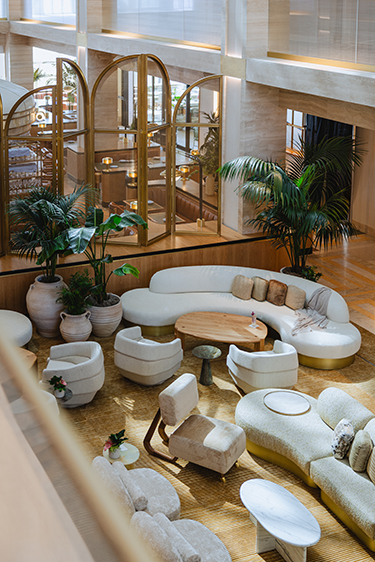
The Regent Santa Monica Beach in California, a collaboration between Wimberly Interiors and AvroKO
How do you balance form and function?
It’s a dance. If the design doesn’t meet the needs of the guests or patrons, then the aesthetic doesn’t matter. The experience is compromised when the functionality fails. So, while it’s important to dream big, the functionality will always bring you back to reality.
Have you faced obstacles as a woman in the industry?
In any profession, strong women often face labels. But for me, it’s always been about staying authentic and focusing on the work. Leadership and decisiveness are expressions of clarity and vision. Over time, I’ve learned to tune out the noise.
How can the industry better support women?
The best way to support women in the industry is simply showing up. [Parker-Torres Design cofounder] Miriam Torres and I recently discussed the lack of mentorship for women. I believe everyone deserves the opportunity to have mentors in their lives. Mentorship is crucial for navigating complex projects, developing leadership skills, guiding creative direction, and fostering confidence.
What’s one lesson you wish you had known earlier?
I wish I had known earlier the importance of embracing failure as part of the learning process. Some of the best lessons come from challenges and setbacks. They shape your problem-solving skills, resilience, and overall growth in ways success alone can’t.
What are you working on that you’re excited about?
We have several projects under construction, including the highly anticipated Waldorf Astoria New York and a renovation at the Ritz-Carlton, Laguna Niguel, both of which will be unveiled soon. We’re also preparing to launch a stunning new restaurant in San Francisco in the coming months. I’m particularly excited about a specialty suite conversion in New York that boasts a breathtaking panoramic view of Central Park.
Helen Jorgensen
1st Vice President, Host Hotels & Resorts
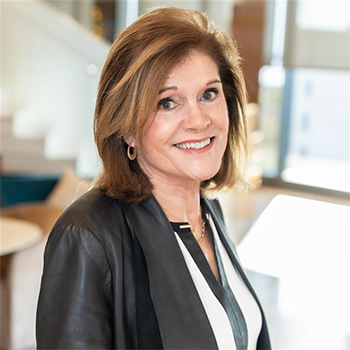 With more than 30 years in the industry, Helen Jorgensen has held key roles at Disney and Marriott before joining Host Hotels & Resorts, where she oversees nearly 100 properties. Her passion for design is deeply rooted in her early love of art, combined with a strategic, analytical mindset that allows her to balance creativity with functionality. She has played a key role in shaping projects like the Axiom in San Francisco and the Phoenician in Scottsdale and is currently overseeing luxury residential developments at the Four Seasons Resort Orlando and the Villas at the Canyon Suites at the Phoenician.
With more than 30 years in the industry, Helen Jorgensen has held key roles at Disney and Marriott before joining Host Hotels & Resorts, where she oversees nearly 100 properties. Her passion for design is deeply rooted in her early love of art, combined with a strategic, analytical mindset that allows her to balance creativity with functionality. She has played a key role in shaping projects like the Axiom in San Francisco and the Phoenician in Scottsdale and is currently overseeing luxury residential developments at the Four Seasons Resort Orlando and the Villas at the Canyon Suites at the Phoenician.
What are your earliest design memories?
My earliest memory of design is rooted in my love for art—I would spend hours drawing with pencil and charcoal as a young girl. The outdoors, especially animals and birds, were my greatest inspirations, fueling my creativity and shaping my artistic sense.
What inspired you to pursue a career in design?
I am inspired by the idea of solving problems in ways that are functional yet beautiful. Design involves finding solutions to operational and aesthetic concerns, and this approach expresses my creative and analytical personalities. Hospitality design offers a rich blend of strategy, collaboration, and creativity—so many layers that make it endlessly exciting.
How did you get your start in the industry?
My career has been a journey of constant evolution. I began my professional career in contracting, working with a range of firms, but it was my first experience in hospitality with Marriott that captivated me. The energy and fast-paced nature of the industry made it exciting. The way procurement, design, and construction came together to bring a project to life perfectly aligned with my business background. Add to that the creativity and artistry of design, and I found myself completely hooked.
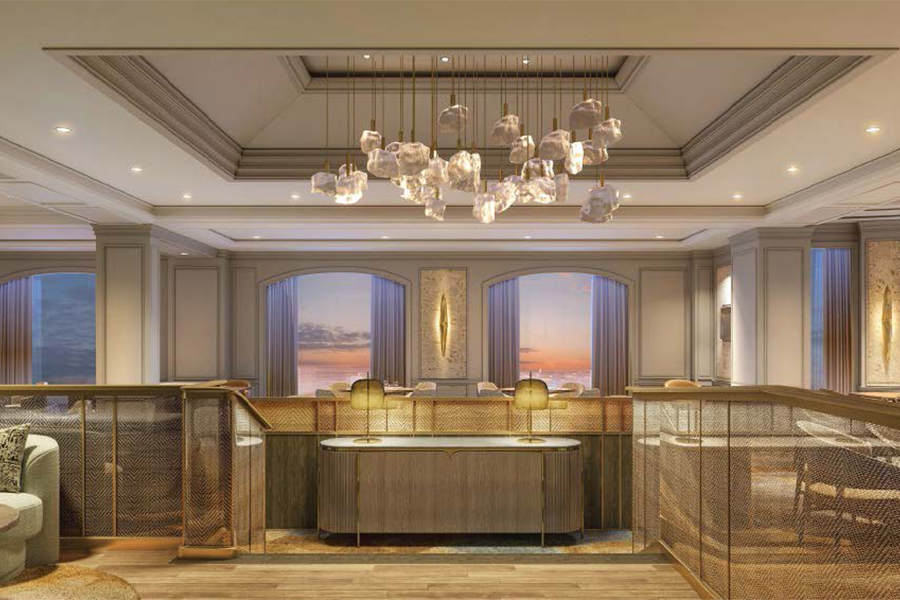
The reimagined Salt restaurant at the Ritz-Carlton, Amelia Island in Florida, led by HBA
Is there a defining moment that has shaped your approach?
I don’t have a single defining moment, but rather a collection of moments that have shaped my approach. Over the years at Host, I’ve been fortunate to work alongside incredible mentors whose guidance and inspiration have been invaluable. Working for an owner has provided me with the unique opportunity to engage in broader design approaches, collaborating closely with our design partners, whether from a design firm or brand. By embracing diverse perspectives and working together, the best designs and solutions naturally emerge.
Is there anyone in the industry you’d like to elevate?
I’ve had the privilege of working with many incredibly talented people throughout the years, and I would love to name them all. However, one person truly stands out. When she stepped into our renovation and Marriott Transformation Capital Program projects, she had Evelyn Harris’ big shoes to fill. Gina Tomczak, senior director, Marriott global design, filled those shoes effortlessly. She became an integral team member of our projects, fostering collaboration and assuring project success. Her design insights and feedback have consistently enhanced every project she’s been involved in. She’s a true partner, and I deeply value her creativity and design expertise.
What do you like most about your job?
This career has allowed me to work in a variety of industries, from which I built my skillsets. It has resulted in my meeting so many interesting people. It has allowed me to travel to so many exciting places around the world. Each project gave me an opportunity to learn and take risks.
What advice would you tell your younger self?
To not only pursue opportunities but also to create them. Remember, for new doors to open, you may need to take the initiative to build some yourself. By creating opportunities, you will have fresh avenues to present your ideas, gain valuable exposure, and engage with industry leaders.
Nina Grondin
Managing Partner + Cofounder, Curioso
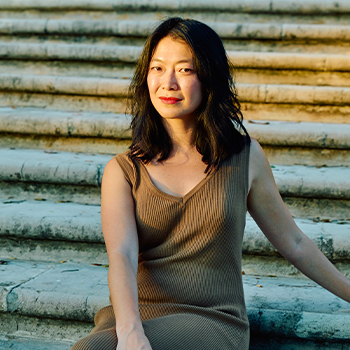 Nina Grondin brings thoughtful leadership and strategic insight to Chicago- and Merida, Mexico-based Curioso, guiding business operations, creative direction, and client partnerships. With a background in business, economics, and finance, and nearly two decades of experience in the hospitality industry, she marries analytical expertise with creative vision to deliver meaningful, human-centered design projects for brands such as IHG, Hyatt, Marriott, and Hilton, as well as independent developers across the U.S., Mexico, and the Caribbean.
Nina Grondin brings thoughtful leadership and strategic insight to Chicago- and Merida, Mexico-based Curioso, guiding business operations, creative direction, and client partnerships. With a background in business, economics, and finance, and nearly two decades of experience in the hospitality industry, she marries analytical expertise with creative vision to deliver meaningful, human-centered design projects for brands such as IHG, Hyatt, Marriott, and Hilton, as well as independent developers across the U.S., Mexico, and the Caribbean.
What inspired you to pursue a career in design?
I was working in finance at a startup in Chapel Hill, North Carolina straight out of college, helping build the business from the ground up. I loved that part—solving problems, creating something out of nothing. But after a while, the work started feeling empty. Outside of work, I found myself drawn to more tactile, creative things. I had two close friends who ended up nudging me toward design without even trying. One was an attorney who was renovating his house. During the day he’d be demoing kitchen cabinets, and at night we’d use the doors he tore out as canvases for paintings. The other was an architect designing municipal buildings by day but moonlighting on these beautiful renderings for Tiffany’s stores that hadn’t been built yet. I remember being stunned that you could visualize something so clearly before it existed. That got my wheels turning about my career path. I wanted to be part of creating things that had a real, emotional presence in the world.
How did you get your start in the industry?
When I first moved to Chicago, I happened to walk into a restaurant on its opening day. I hit it off with the owner, and she offered me a job on the spot, so I took it. During those first few weeks, the designer of the restaurant was constantly in and out handling punchlist items, and I must have asked him a hundred questions. Eventually, he said, ‘You should go to design school. When you graduate, I’ll give you an internship.’ I never took him up on the internship, but I did enroll in design school a few months later. My favorite course was hospitality. I loved the idea of designing spaces that would become the backdrop to people’s memories. After graduation, I set my sights on hospitality firms in Chicago and landed an internship at the Gettys Group. It was where I first collaborated with my cofounder and business partner in Curioso, Daniel Pierce, and it kept building from there.
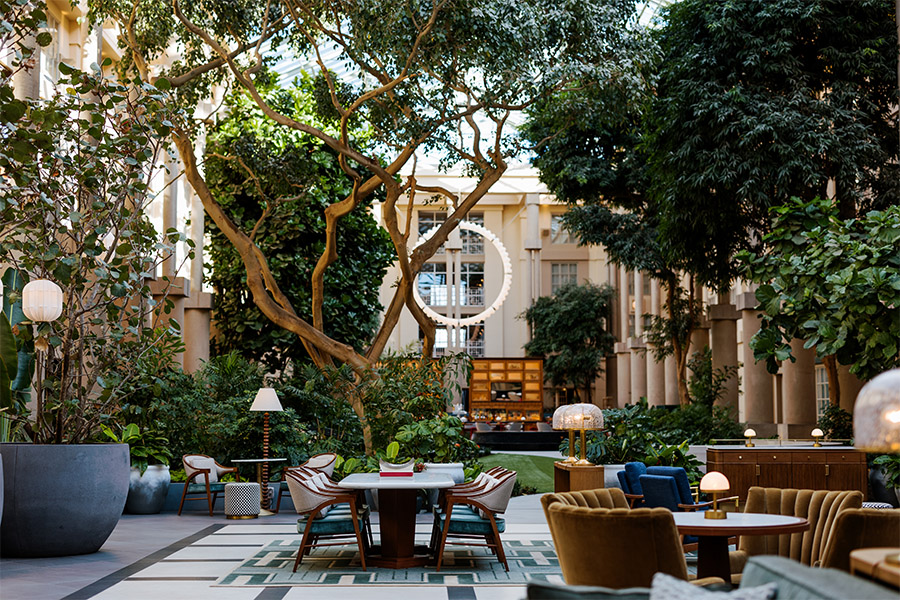
A verdant outdoor area at the Hyatt Regency Greenwich in Connecticut
Is there a defining project that shaped your career?
It was our first hotel project we worked on as Curioso: a lifestyle hotel in downtown El Paso. At the time, the area was hanging on the edge of revitalization. A lot of people were skeptical the hotel would even make it. But it thrived. Each visit, we saw the neighborhood come to life. [Former U.S. representative] Beto O’Rourke even started holding town hall-style meetings there. The staff spoke with such pride about the place. The chamber of commerce told us it helped define a new design identity for El Paso. That was the moment it clicked. Hospitality isn’t just about beautiful spaces or clever concepts, it can also bring dignity to a place, pride to the people who work there, and a sense of belonging to the community.
What do you like most about your job?
The people, the stories, and watching a simple idea turn into a real place.
Who would you like to elevate in the industry?
Women. People of color. Minorities. Hospitality is one of the most diverse industries in the world, but too often, that diversity is only visible at the lower levels. We need to see it reflected in leadership, ownership, and decision-making roles. We need more voices and more points of view at the table.
Nicole Fournier
Vice President of Interior Design, MGM Resorts International
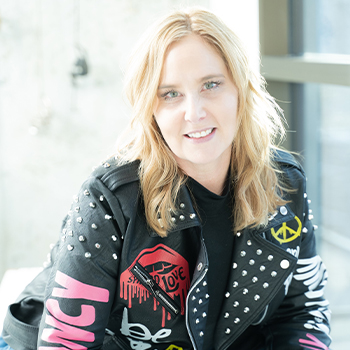 Since January 2022, Nicole Fournier has led design management for all capital projects across MGM Resorts International’s 18 U.S. properties as vice president of interior design. A key figure at MGM since 2006, she has been instrumental in shaping immersive environments that blend entertainment, art, and cuisine, including spearheading the design for MGM National Harbor in Baltimore and MGM Springfield in Massachusetts, crafting dynamic casino, hotel, entertainment, retail, and dining spaces. Fournier’s passion for design dates back to childhood, and today she thrives on collaboration and mentorship, bringing visionary concepts to life while fostering lasting industry relationships.
Since January 2022, Nicole Fournier has led design management for all capital projects across MGM Resorts International’s 18 U.S. properties as vice president of interior design. A key figure at MGM since 2006, she has been instrumental in shaping immersive environments that blend entertainment, art, and cuisine, including spearheading the design for MGM National Harbor in Baltimore and MGM Springfield in Massachusetts, crafting dynamic casino, hotel, entertainment, retail, and dining spaces. Fournier’s passion for design dates back to childhood, and today she thrives on collaboration and mentorship, bringing visionary concepts to life while fostering lasting industry relationships.
What are your earliest design memories?
In the early ’80s, [I traveled] with my family to Cancun. We stayed at a resort with round bungalows, thatched-hut roofs, with mosquito nets over our beds. It formed such a memorable moment for me that I dreamed of creating such amazing spaces myself. In elementary school I rearranged and drew furniture plans while imagining color palettes with wallpaper accents. Additionally, my parents took us on vacations to various countries where we scoured local antique stores, flea markets, and toured historical and architectural buildings, which made me fall in love with furniture and the history of architecture. My dad taught me so much during those days that I still carry with me today.
How did you get your start in the hospitality industry?
Back in 1995 I had just moved to Las Vegas and was working for a high-end residential interior design firm. We worked on the original development of the Four Seasons Hotel and Mandalay Bay Resort and Casino back in the late ’90s. It was a time when implosions on the Strip were frequent and the request by the casino executives was to advance the Las Vegas hotel industry to feel more residential. In 2006, I was referred by a friend to MGM Resorts International and a project on the Strip called CityCenter, which is the Aria, Vdara, Veer Towers, and Waldorf Astoria campuses today. Riding on the manlift as each hotel floor was poured had me hooked for a lifetime of design and development as an owner representative.

Avenue Interior Design crafted Coraline’s restaurant in the Beau Rivage Resort & Casino in Biloxi, Mississippi
What obstacles have you faced as a woman in the industry?
Working in a large corporate structure for almost 19 years, I have learned how to present ideas to key executive stakeholders by listening to their input while quickly solving problems in a large room. You can’t be afraid to speak up and present ideas and thoughts to any level stakeholder. I am truly proud of our company and how it is embracing women in leadership roles. When I began with MGM Resorts Design and Development all the higher-level positions were held by men. We now have two women serving as vice presidents of design and one as the director of interior design.
What projects are you most excited about?
We continue to advance our final design and development of our Empire City Casino project in Yonkers, New York. We have been working on this project for almost three years, and we are finally advancing to the final RFA with complete venue flythroughs and full renderings. Maintaining a vision and passion for this project while working on our CapEx projects domestically has challenged our ingenuity to redefine our brand in this marketplace. Additionally, we are doing a lot of work at Aria Resort & Casino: restaurants, room remodels, villas, bars and lounges, and updated pool decks. The work is redefining that brand for the years to come. We’re also continuing with the design and development of the W brand to fully realize the partnership between Marriott and MGM Resorts International at the Mandalay Bay campus, an exciting new venture for us as a group. Lastly, the team is working on an exciting, secret CapEx project that will be unveiled for our Formula 1 weekend events this year at the Bellagio.
What advice would you give your younger self?
Enjoy the journey and be yourself. We are always evolving and growing, and some of the relationships you make will be life-changing and everlasting.
Hear more at HD Expo + Conference:
Women in Design Awards Breakfast
Tuesday, May 6th, 8:30–10:00 a.m.
Location: South Pacific Ballroom
Photos by Tanveer Badal, Grace Coudal, Regan Wood and courtesy of Avenue Interior Design, CRÈME, Curioso, Host, Hyatt, MGM, and Strategic

